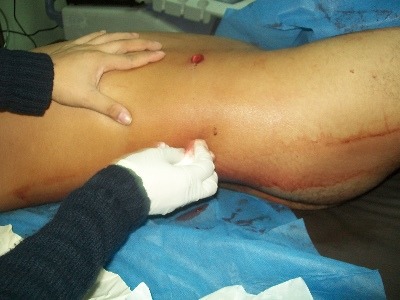There’s a lot of talk in trauma nursing circles about family presence during trauma resuscitation (FPDR). But after searching far and wide, I have not been able to find much literature about it. There are a few papers about family reaction to it, and a few more about healthcare providers’ reactions. But the science is not yet very good.
Typical arguments against it from (mainly) doctors and some nurses, and my rebuttals, are as follows:
- Family members will think the trauma resuscitation is chaotic – then fix your trauma team; you’ve got a problem
- They will slow the team down – an analysis has shown no such effect
- Family will be traumatized by seeing what we do – family members have seen simulations on TV, so they have a pretty good idea of what’s going on
- The doctors and hospital are more likely to be sued – actually, this is probably less likely, because the family has actually seen that you’ve done everything possible for their loved one
Personally, I’m very much for it, especially in the pediatric age group. I encourage all trauma programs to develop a policy to enable FPDR. Here are some key pointers:
- Only allow one key family member in the resuscitation room. Have them decide who it will be. This limits confusion and congestion.
- Assign a “medical interpreter” to stand with them in the room, preferably a nurse. The role of this person is twofold: to explain what is being done and why, and to make sure that they remain safe. If they have a hard time coping, appear to be getting faint, or misbehave in any way, it’s time for them to leave.
- Involve the family member as much as practical. Have them stand near the patient’s head so they can communicate with them, or at least see them.
- Keep the trauma team organized and professional. It’s been my experience that having family in the room puts everybody on their best behavior.
Bottom line: Surveys have shown that family members tend to be more satisfied with care and more convinced that everything possible was done if they are able to witness what may be the final moments of their loved one’s life. A little planning goes a long way in allowing FPDR in your emergency department.
References:
- Health care providers’ attitudes regarding family presence during resuscitation of adults: an integrated review of the literature. Clin Nurse Spec 24(3):161-174, 2010.
- Attitudes of healthcare staff and patients’ family members towards family presence during resuscitation in adult critical care units. J Clin Nurs. 21(13-14):2083-2093, 2012.
- Family presence during pediatric trauma team activation: an assessment of a structured program. Pediatrics 120(3):e565-574, 2007.



